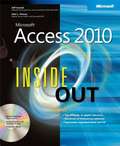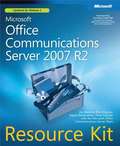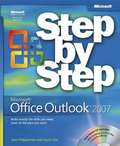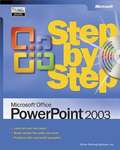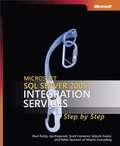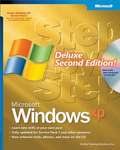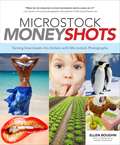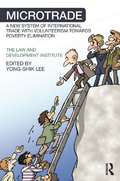- Table View
- List View
Microsoft in the People's Republic of China--1993
by Tarun KhannaExplores some of the economic and political tradeoffs that need to be negotiated by a firm seeking to influence industry structure. The setting is the nascent personal computer software industry in the People's Republic of China (PRC) in 1993. Microsoft has to localize its software products for use in the PRC. This localization can either be done in-house by Microsoft, or can be contracted to the local software vendors. Explores the costs and benefits of full integration and arm's-length market transaction. Also discusses the "holdup" problem that arises when assets specific to a particular partnership are created.
Microsoft's Financial Reporting Strategy
by Dawn Matsumoto Robert BowenExplores Microsoft's overall financial reporting strategy by examining the company's treatment of two accounting issues--software capitalization and revenue recognition. For both issues, the company selects accounting methods that are relatively conservative. Also discusses the issue of managing analysts' expectations and Microsoft's tendency to provide analysts with very conservative expectations for the future. Provides a forum to discuss possible reasons for Microsoft's accounting and disclosure choices and also discusses the Securities and Exchange Commission's recent investigation into Microsoft's accounting practices.
Microsoft's Search
by Jan W. Rivkin Eric J. Van Den SteenIn 2008, executives at Microsoft must decide how to compete against Google in the market for Internet search and advertising. The case describes how Microsoft has responded to a set of competitive threats in the past; how Google has gained a dominant position in Internet search and advertising; and what Microsoft has done so far in its as-yet-unsuccessful effort to catch up with Google. The case then challenges students to construct a strategy that will allow Microsoft to achieve its objectives in the evolving market for search and advertising.
Microsoft's Unlimited Potential (A)
by V. Kasturi Rangan Marie BellIn April 2007, Bill Gates announced Microsoft Unlimited Potential. Its mission was to enable social and economic opportunity for the next five billion people. To deliver against this mission, Microsoft sought to focus its citizenship efforts and its product development efforts in developing markets. This case traces the development of Unlimited Potential on the citizenship side and the business operations side, raising the questions of whether Unlimited Potential is a robust strategy for the company and if so, how the company should organize and execute to achieve its mission.
Microsoft's Vega Project: Developing People and Products
by Christopher A. Bartlett Meg WoznyWith a focus on Matt MacLellan and his careful development as a project manager under his boss and mentor, Jim Kaplan, the case describes the evolution of Microsoft's human-resource philosophies and policies and illustrates how they work in practice to provide the company with a major source of competitive advantage. It looks at employee development, motivation, and retention efforts in one of Microsoft's product groups. Dissatisfied with his project management role, MacLellan decides to become a developer despite the fact that he has never written code professionally. Kaplan is faced with the decision of whether to support his protege's radical career shift, and if so, how to do it not only to MacLellan's satisfaction but also in the organization's best interest.
Microsoft's aQuantive Acquisition
by Gwen Yu Christopher F. Noe Joseph Weber Thomas SamuelsonThis case introduces students to the topic of mergers and acquisitions. At the time that Microsoft purchased aQuantive there was a mixed reaction by analysts and investors on whether this transaction would increase shareholder value. Ultimately the transaction turned out to be a colossal failure, and Microsoft received a substantial amount of bad press. This case allows students to discuss firm's grow strategies (through mergers and acquisitions vs. organic growth) from both an economic perspective and through the accounting lens. The case offers an opportunity to introduce accounting for mergers and acquisitions, i.e., purchase price allocation rules, and other specific accounting issues associated with mergers and acquisitions in the internet advertising setting.
Microsoft/Intuit
by William E. FruhanMicrosoft Corp. proposes to acquire Intuit Corp. Examines the strategic fit and the price proposed to complete the transaction.
Microsoft: Competing on Talent (A)
by Christopher A. Bartlett Meg WoznyDescribes the evolution of Microsoft's human-resource philosophies, policies, and practices and how they used as a core of the company's competitive advantage. In particular, the focus is on how Microsoft tried to retain its ability to recruit, develop, motivate, and retain first-class talent as it grew from a start-up to a global behemoth. Triggered by high-profile, senior-level departures in 1999, the company must decide if it is time to change its "hard core" culture came to be.
Microsoft: Launching the Smart Watch
by Christina Darwall John T. GourvilleMicrosoft is on the verge of launching its Smart Watch technology, which will allow specially designed watches to receive up-to-date information on sports, business, traffic, news, etc. After several years of effort and millions of dollars spent, the questions now revolve around launch strategy and likely consumer adoption. Is this the next big thing for Microsoft or is this a waste of money and resources? Complicating the matter is the fact that although Microsoft designed and will operate the technology to deliver information to these watches, the watches themselves will be sold and marketed by several prominent watch-making partners.
Microsoft: Positioning the Tablet PC
by Youngme MoonMicrosoft is preparing for the launch of the Tablet PC, which allows users to use a pen (stylus) to run Windows and Windows applications, annotate documents, and create handwritten documents for later reference or even conversion to text. Microsoft's original equipment manufacturing partners are developing the Tablet PC hardware, while Microsoft develops the software (the Windows XP Tablet Edition). The Microsoft Tablet PC team is grappling with two critical issues related to the final marketing plan. The first concerns the positioning of the Tablet PC. One option is to position the device as a radical breakthrough in computing technology that will dramatically change the role of computers in the workplace and home. A much more conservative option is to position the Tablet PC as merely a high-end laptop with several interesting new features. The second concerns the initial target market for the device. Includes color exhibits.
Microsoft: Positioning the Tablet PC
by Youngme MoonMicrosoft is preparing for the launch of the Tablet PC, which allows users to use a pen (stylus) to run Windows and Windows applications, annotate documents, and create handwritten documents for later reference or even conversion to text. Microsoft's original equipment manufacturing partners are developing the Tablet PC hardware, while Microsoft develops the software (the Windows XP Tablet Edition). The Microsoft Tablet PC team is grappling with two critical issues related to the final marketing plan. The first concerns the positioning of the Tablet PC. One option is to position the device as a radical breakthrough in computing technology that will dramatically change the role of computers in the workplace and home. A much more conservative option is to position the Tablet PC as merely a high-end laptop with several interesting new features. The second concerns the initial target market for the device. Includes color exhibits.
Microsoft® Access® 2010 Inside Out
by John Viescas Jeff ConradYou're beyond the basics, so dive right in and really put your database skills to work! This supremely organized reference is packed with hundreds of timesaving solutions, troubleshooting tips, and workarounds. It's all muscle and no fluff. Discover how the experts tackle Access 2010 -- and challenge yourself to new levels of mastery! Master essential data management and design techniques Import and link to data from spreadsheets, databases, text files, and other sources Use action queries to quickly insert, update, or delete entire sets of data Create custom forms to capture and display data Design reports to calculate, summarize, and highlight critical data--and learn advanced techniques Automate your application with macros and Visual Basic® for Applications (VBA) Use Access Services to extend your database application to the Web A Note Regarding the CD or DVD The print version of this book ships with a CD or DVD. For those customers purchasing one of the digital formats in which this book is available, we are pleased to offer the CD/DVD content as a free download via O'Reilly Media's Digital Distribution services. To download this content, please visit O'Reilly's web site, search for the title of this book to find its catalog page, and click on the link below the cover image (Examples, Companion Content, or Practice Files). Note that while we provide as much of the media content as we are able via free download, we are sometimes limited by licensing restrictions. Please direct any questions or concerns to booktech@oreilly.com.
Microsoft® Excel Data Analysis and Business Modeling
by Wayne WinstonNow you can apply the techniques that business analysts at leading companies use to analyze and transform data into bottom line results. For more than 10 years, well- known consultant and business professor Wayne Winston has been teaching corporate clients and MBA candidates the most effective ways to use Microsoft Excel for data analysis, modeling, and decision making. This practical, business-focused guide delivers the best of Winston's classroom experience to you-from asset allocation modeling to estimating exponential growth, forecasting sales, optimizing portfolios, and other critical functions. You also get all the book's sample files on CD-ROM - ready for use in your own work.
Microsoft® Office Communications Server 2007 R2 Resource Kit
by Rui Maximo Rick Kingslan Rajesh Ramanathan Nirav KamdarIn-depth, comprehensive, and fully revised for R2--this RESOURCE KIT delivers the information you need to deploy, manage, and troubleshoot Microsoft Office Communications Server 2007 R2. Get technical insights, scenarios, and best practices from those who know the technology best--the engineers who designed and developed it--along with 90+ Windows PowerShellTM scripts, bonus references, and other essential resources on CD. Get expert advice on how to: Plan server roles, infrastructure, topology, and security Design and manage enterprise instant messaging (IM), presence, and conferencing solutions Configure voice mail, enterprise voice, dual-forking (PBX), and VoIP Apply industry best practices for deployment Manage Unified Communications clients and devices Administer remote access, federation, and public IM Understand SIP and authentication technologies Implement a cross-team backup-and-restore plan Automate management tasks--sample scripts included Monitor, diagnose, and troubleshoot problems more efficiently CD features: 90+ Windows PowerShell scripts for automating administrative tasks Office Communication Server Resource Kit tools Links to references and webcasts Understanding Microsoft Virtualization Solutions eBook Four appendixes, including Windows PowerShell functions, Direct SIP with IP-PBX, and A/V troubleshooting Bonus content--Chapters from 15 related Microsoft Press® books Fully searchable eBook of this guide A Note Regarding the CD or DVD The print version of this book ships with a CD or DVD. For those customers purchasing one of the digital formats in which this book is available, we are pleased to offer the CD/DVD content as a free download via OReilly Medias Digital Distribution services. To download this content, please visit OReillys web site, search for the title of this book to find its catalog page, and click on the link below the cover image (Examples, Companion Content, or Practice Files). Note that while we provide as much of the media content as we are able via free download, we are sometimes limited by licensing restrictions. Please direct any questions or concerns to booktech@oreilly.com.
Microsoft® Office Outlook® 2007 Step by Step
by Joan Lambert Joyce CoxExperience learning made easy--and quickly teach yourself how to manage your communications with Outlook 2007. With Step By Step, you set the pace--building and practicing the skills you need, just when you need them! Send e-mail, schedule meetings, and organize tasks for easy follow-up Manage your inbox with rules, folders, and search filters Share your calendar with anyone via e-mail or on the Web Manage RSS feeds and newsgroups--without leaving your inbox Learn ways to block spam and protect your sensitive messages Personalize the way Outlook 2007 looks and works Your all-in-one learning experience includes: Files for building skills and practicing the book's lessons Fully searchable eBook Bonus quick reference to the Ribbon, the new Microsoft Office interface Windows Vista Product Guide eReference--plus other resources on CD A Note Regarding the CD or DVD The print version of this book ships with a CD or DVD. For those customers purchasing one of the digital formats in which this book is available, we are pleased to offer the CD/DVD content as a free download via O'Reilly Media's Digital Distribution services. To download this content, please visit O'Reilly's web site, search for the title of this book to find its catalog page, and click on the link below the cover image (Examples, Companion Content, or Practice Files). Note that while we provide as much of the media content as we are able via free download, we are sometimes limited by licensing restrictions. Please direct any questions or concerns to booktech@oreilly.com.
Microsoft® Office PowerPoint® 2003 Step by Step
by Online Training SolutionsExperience learning made easy--and quickly teach yourself how to use PowerPoint 2003, the Microsoft Office presentation graphics program. With STEP BY STEP, you can take just the lessons you need, or work from cover to cover. Either way, you drive the instruction--building and practicing the skills you need, just when you need them! Master the tools for transforming your ideas into winning presentations Use ready-made design templates or create your own look Make your point with compelling charts, diagrams, graphics, text, and hyperlinks to Web content Keep it dynamic--animate your slides, insert sounds and movies, and create transitions Deliver your presentation in person, over the Web, or on CD Prepare for the Microsoft Office Specialist exam Practice your skills using the files on CD! Your Microsoft Office Reference Pack on CD includes: Twenty-five templates straight from the Microsoft Office team Microsoft Office System Quick Reference eBook Insider's Guide to Microsoft Office OneNote eBook--describes new notetaking features in Office Microsoft Computer Dictionary, Fifth Edition, eBook--10,000+ entries! Introducing the Tablet PC eBook Complete STEP BY STEP eBook A Note Regarding the CD or DVD The print version of this book ships with a CD or DVD. For those customers purchasing one of the digital formats in which this book is available, we are pleased to offer the CD/DVD content as a free download via O'Reilly Media's Digital Distribution services. To download this content, please visit O'Reilly's web site, search for the title of this book to find its catalog page, and click on the link below the cover image (Examples, Companion Content, or Practice Files). Note that while we provide as much of the media content as we are able via free download, we are sometimes limited by licensing restrictions. Please direct any questions or concerns to booktech@oreilly.com.
Microsoft® Office Project 2003 Inside Out
by Teresa Stover<div xmlns="http://www.w3.org/1999/xhtml"><p>Take your Microsoft Project experience to the next level! This supremely organized reference packs hundreds of timesaving solutions, troubleshooting tips, and handy workarounds for Project 2003 in concise, fast-answer format.</p></div>
Microsoft® OneNote In One Hour for Lawyers
by Ben M. SchorrEach copy of Microsoft® Office 2010 sold now includes OneNote, and its usage among lawyers is poised to skyrocket. With this guide, learn to use OneNote in your law practice to save time and increase productivity. Microsoft® OneNote in One Hour for Lawyers will explain, in plain English, how to get started with the software, develop best practices, and become far more effective in your note-taking and research.
Microsoft® SQL Server™ 2005 Integration Services Step by Step
by Hitachi Consulting Scott Cameron Paul Turley Satoshi Iizuka Pablo Guzman Joe KaspizakTeach yourself the fundamentals of SQL Server Integration Services--one step at a time. This practical, learn-by-doing tutorial delivers the guidance you need to transform and consolidate data--and build solutions that support your business intelligence needs. Discover how to: Design and execute packages that transform data between files and relational databases Configure connection managers to access other data sources Create data flows that alter, split, match, and merge data Develop event-handlers and monitor package performance Encrypt sensitive information and control access to packages Customize script code to automate Control Flow and Data Flow tasks Debug, troubleshoot, and optimize packages CD features: All practice exercises Sample databases Fully searchable eBook A Note Regarding the CD or DVD The print version of this book ships with a CD or DVD. For those customers purchasing one of the digital formats in which this book is available, we are pleased to offer the CD/DVD content as a free download via O'Reilly Media's Digital Distribution services. To download this content, please visit O'Reilly's web site, search for the title of this book to find its catalog page, and click on the link below the cover image (Examples, Companion Content, or Practice Files). Note that while we provide as much of the media content as we are able via free download, we are sometimes limited by licensing restrictions. Please direct any questions or concerns to booktech@oreilly.com.
Microsoft® Solutions Framework Essentials: Building Successful Technology Solutions
by Michael Turner<div xmlns="http://www.w3.org/1999/xhtml"><p>Get the hands-on guidance you need to understand the proven practices and foundational principles of working with the Microsoft Solutions Framework, Version 4. Written by an expert, this essential reference offers practical examples and case studies.</p></div>
Microsoft® Visual Basic® 2010 Developer's Handbook
by Klaus Löffelmann Sarika Calla PurohitYour expert guide to building modern applications with Visual Basic 2010 Take control of Visual Basic 2010--for everything from basic Windows® and web development to advanced multithreaded applications. Written by Visual Basic experts, this handbook provides an in-depth reference on language concepts and features, as well as scenario-based guidance for putting Visual Basic to work. It's ideal whether you're creating new applications with Visual Basic 2010 or upgrading projects built with an earlier version of the language. Discover how to: Use Visual Basic 2010 for Windows Forms and Windows Presentation Foundation projects Build robust code using object-oriented programming techniques, such as classes and types Work with events and delegates--and add your own events to custom classes Program arrays, collections, and other data structures in the Microsoft .NET Framework Solve problems quickly and easily using My namespace in Visual Basic Dive into Microsoft LINQ, including LINQ to XML and LINQ to Entities Tackle threading, multitasking, and multiprocessor development and debugging
Microsoft® Windows® XP Step by Step Deluxe
by Online Training SolutionsTeach yourself exactly what you need to know about using Microsoft Windows XP-- including the latest service pack and other updates--one step at a time! With STEP BY STEP, you can take just the lessons you want or work from cover to cover--you drive the instruction. And now, with the Deluxe Second Edition of this popular guide, you get even more content, more tools on CD, more cool things to learn and experience! Personalize your PC--from screen saver to system settings Set up your e-mail and instant messaging Install a printer, CD/DVD burner, extra monitor, or camera Connect to the Internet or another network Create your own movies and slide shows; add special effects Troubleshoot and tune your own system Use new security features and system updates from Windows XP Service Pack 2--ready to download at http://www.microsoft.com/windows Your Deluxe Edition CD includes: Microsoft Windows Movie Maker 2 software Plus! Photo Story 2 LE software * Windows Media Bonus Pack software Microsoft Power Toys for Windows XP software Microsoft Computer Dictionary, Fifth Edition, eBook--10,000+ entries! Microsoft Encyclopedia of Networking, Second Edition, eBook Microsoft Encyclopedia of Security eBook Complete STEP BY STEP eBook Skill-building practice files Links to Windows XP-related downloads and additional information A Note Regarding the CD or DVD The print version of this book ships with a CD or DVD. For those customers purchasing one of the digital formats in which this book is available, we are pleased to offer the CD/DVD content as a free download via O'Reilly Media's Digital Distribution services. To download this content, please visit O'Reilly's web site, search for the title of this book to find its catalog page, and click on the link below the cover image (Examples, Companion Content, or Practice Files). Note that while we provide as much of the media content as we are able via free download, we are sometimes limited by licensing restrictions. Please direct any questions or concerns to booktech@oreilly.com.
Microstock Money Shots: Turning Downloads into Dollars with Microstock Photography
by Ellen Boughn Andres RodriquezToday's online microstock agencies make it possible for anyone with a camera to sell their photographs. But the competition is daunting--one leading agency receives 14,000 uploads each day. How can you make your images stand out--and better yet, sell? In this guide, industry veteran Ellen Boughn reveals everything you need to know, including: . How to get started selling your photos. What sells and what doesn't. How to cast and work with models. The fine print on permits and permissions. How to reach specialty markets like advertising, retail, news, and education Packed with hundreds of examples of photos that sell (and some that don't), Microstock Money Shots is your key to maximizing views and downloads in the exciting new world of microstock.From the Trade Paperback edition.
Microtrade: A New System of International Trade with Volunteerism Towards Poverty Elimination (Routledge Research in International Economic Law)
by Yong-Shik LeeWith contributions from well-regarded scholars of international economic law, this book sets out the case for an innovative solution to extreme poverty which utilizes international trade and its legal framework to relieve populations of the poorest countries around the world of extreme poverty. "Microtrade" is international trade on a small scale, based primarily on manually produced products using small amounts of capital and low levels of technology available at a local level in lesser developed countries. This book explores the theory, application, and legal framework for microtrade. In the first part of the book the architect of the microtrade theory, Yong-Shik Lee, offers a theoretical framework for microtrade including its basic elements, product demand and operational issues, legal issues, and the global management and facilitation of microtrade. The book then goes on to look at issues including the structure and financing of microtrade, e-commerce, government procurement, and the fair trade movement’s possible relationship with microtrade. . The final part of the book considers empirical case studies of microtrade with agricultural products. The book shows how microtrade, if effectively administered on a global scale, can do much to end extreme poverty.

